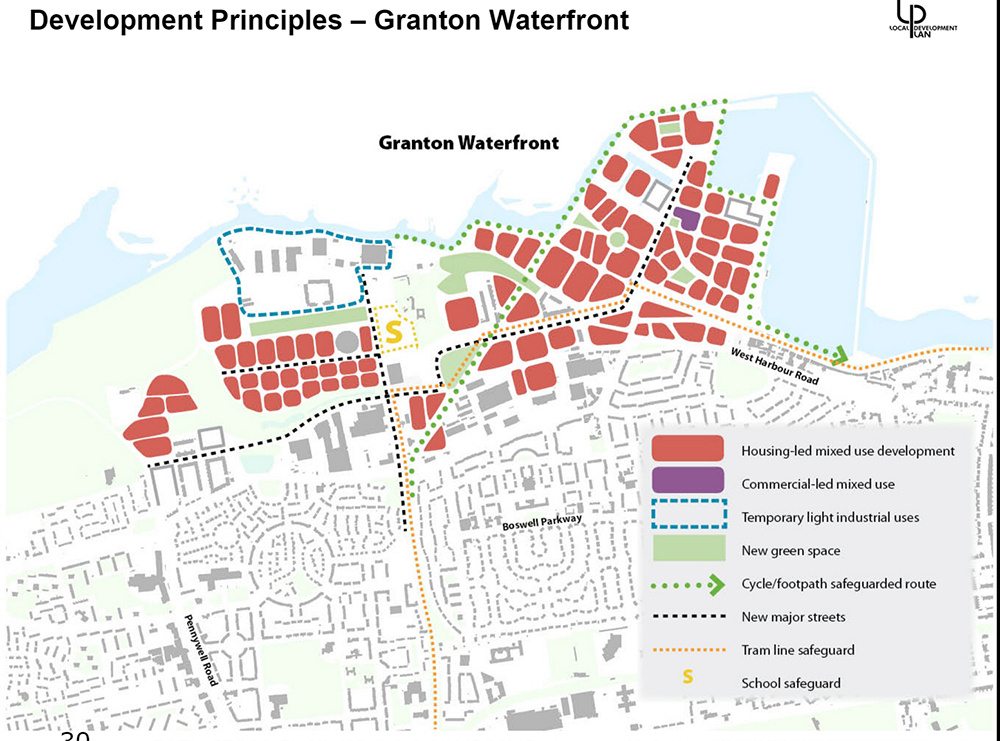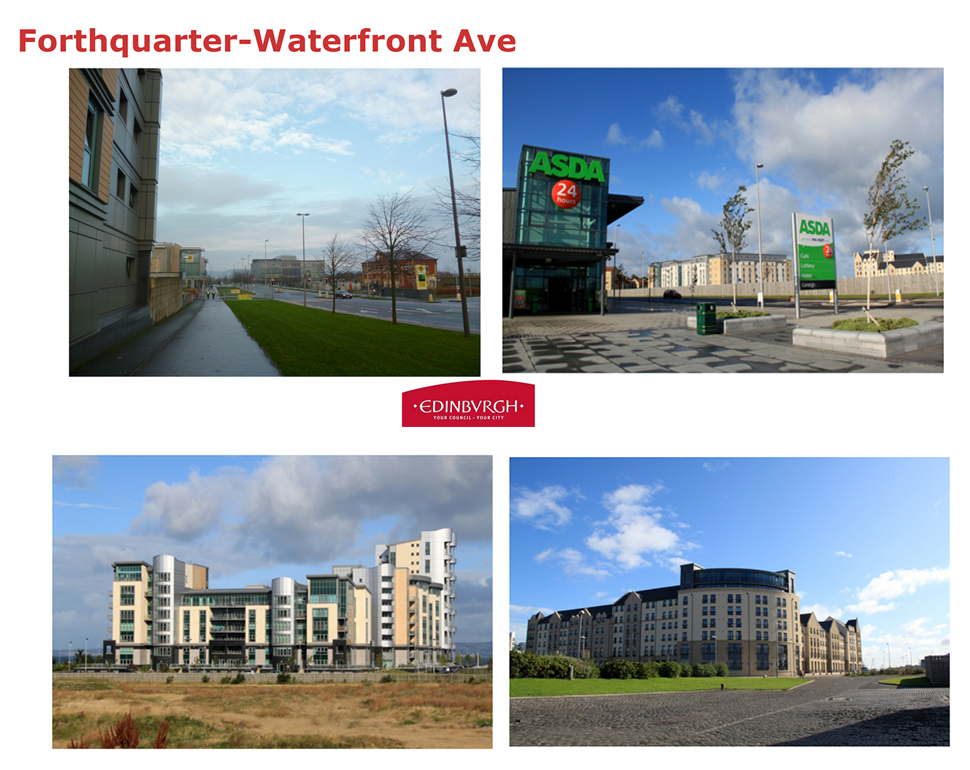Edinburgh’s Waterfront Redevelopment – the need for landscape urbanism

Richard J Williams (born in Washington DC and Professor of Contemporary Visual Cultures at Edinburgh University College of Art) is right about the redevelopment of Edinburgh’s Waterfront . He wrote in the prestigious Foreign Policy magazine that ‘It starts promisingly enough in Leith with warehouse conversions and funky bars, but head a quarter-mile east and you find yourself in a dystopian wasteland of vacant lots worthy of a J.G. Ballard novel. The waterfront reaches its peak of despair at Granton Harbour where a handful of shoddy buildings emerge from a giant mud pool’. But Williams is wrong about the cause of the problem. He writes that ‘The city government lacks both a plan and the ability to stick to it’. Sticking to a non-existent plan would be hard. The problem is that the City has a really bad plan for the Waterfront. The above illustration is from a presentation on 9 January 2015 by Alison Kirkwood (Majors Waterfront Team Manager, City of Edinburgh Council). Don’t be misled by the word ‘mixed’, which is a fractional nod to post-Jane Jacobs planning, it is a 1950s style land use zoning plan all too accurately labelled as a plan for ‘Development’ (ie a blinkered plan designed exclusively to generate additional Council Tax). The ‘New Green Space’ is badly conceived and new ‘Cycle/Footpath safeguarded route’ is just that.
Calton Hill could lose its role as ‘Scotland’s Disgrace’ to Edinburgh Waterfront – but there are development plans for a luxury hotel on the Royal High School site on Calton Hill which could secure its historic reputation!

Edinburgh City Council should learn from the city fathers who planned its eighteenth century New Town: major developments should be based on imaginative landscape architectural ideas for the creation of public goods. If you just build some roads, line them with blocks of flats in ill-assorted styles and call the unbuilt land ‘New Green Space’ you will get a dreary ‘estate’ with expansive SLOAP (Space Left Over After Planning). Better to make a public realm which is useful, beautiful and sustainable.
Reports in 2015 suggested that planning permission for the latest scheme would be refused. This was good news. But the reasoning was flawed. The Council worried that new retail development on the waterfront would damage the city centre. Classical Edinburgh’s city fathers had more wisdom when they advised that ‘It has been objected, that this project may occasion the centre of the town to be deserted. But of this there can be no hazard.’ The quotation is from the Convention of Royal Borough’s 1752 Proposals for carrying on certain Public Works in the City of Edinburgh written by the Earl of Minto.
The Minto Report laid the ground for a 1766 competition to design of Edinburgh New Town. It begins with the declaration that ‘Among the several causes to which the prosperity of a nation may be ascribed, the situation, conveniency, and beauty of its capital, are surely not the least considerable. A capital where these circumstances happen fortunately to concur, should naturally become the centre of trade and commerce, of learning and the arts, of politeness, and of refinement of every kind.’ Edinburgh’s natural advantages were recognised as ‘The healthfulness of its situation, and its neighbourhood to the Forth, must no doubt be admitted as very favourable circumstances.‘ Sir Gilbert Elliot, 3rd Baronet, of Minto (1722) Minto was a statesman, philosopher, poet and friend of David Hume. Robert Walpole declared he had ‘powers of eloquence, art, reasoning, satire, learning, persuasion, wit, business, spirit and plain common sense’.
Instead of an enlightened vision for the creation of a new landscape, the developers appear set on making ‘a New Pilton’. Old Pilton, beside Granton, is a post-1945 council estate with a geometrical road layout, high crime rates and, as Wiki puts it, ‘anti-social behaviour especially young joyriders stealing powerful motorbikes and cars, driving them recklessly round the scheme’. It looks as though the Fourthquarter will have enough desolate ‘hard landscape’ to host bike or car races.
Edinburgh City Council should commission an urban landscape design strategy based on the principles of landscape urbanism.
